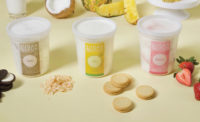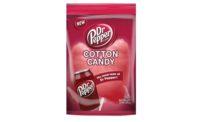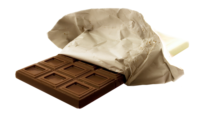Cotton candy has sweetened festivals for more than a century, but consumers don’t have to wait for summertime to get their spun-sugar fix anymore.
“For the longest time, you really couldn’t get cotton candy but at the fair and carnival,” said Eric Basaker, director of sales for wholesaler and private label manufacturer Dandy Cotton Candy. “Now, because of the different packaging methods, you can still find that fresh cotton candy all over the place.”
And at a good price, noted Scott Samet, president and co-founder of Taste of Nature, Inc.
“When consumers buy it freshly spun at a carnival or a circus, it’s usually dramatically higher than it is at retail,” he said. “There is a pricing advantage for retailers offering it at lower prices than consumers would find it at freshly spun locations.”
At fairs, carnivals, theme parks, arenas and other attractions, traditional Pink Vanilla and Blue Raspberry flavors reign. The same goes for big box stores, grocery chains and discount retailers, but more and more, retailers are seeking innovative cotton candy products that build on nostalgia and the simple formula of sugar, color and flavor.
“That’s what people know and trust when it comes to kids,” Basaker said of the classic pink and blue varieties, but “with the Millennial generation, we’re seeing a lot of different, interesting flavors that are being requested.”
Basaker cited Matcha Green Tea and Pineapple as recently launched flavors, and when Candy Industry spoke to Basaker in January, Corona, Calif.-based Dandy Cotton Candy was producing Mango Chile and Horchata varieties for a customer.
“When it comes to the Millennial market, anything goes — the crazier the better, but those are more for the boutique places,” he said.
Taste of Nature also understands the value of flavor innovation. In addition to the classic Pink Vanilla and Blue Raspberry, the Santa Monica, Calif.-based company offers Cherry, Grape and Tropical varieties, featuring Watermelon, Banana and Pineapple Coconut flavors, under its Swirlz brand.
Partnering with licensors can also bring new consumers to the cotton candy category. In early 2018, the Santa Monica, Calif.-based company launched Dr. Pepper cotton candy, replicating the flavor of the cult-classic soft drink.
“We have been able to bring those consumers into our product, and they have responded very favorably,” Samet said.
The company has also introduced cotton candy under a Hawaiian Punch license in the drink’s signature flavor: Fruit Juicy Red.
“When licenses match the product, that flavor profile tends to be a differentiating factor and can drive consumers to purchase,” Samet said.
And not unlike other confectionery categories, some consumers seek a cleaned up version of the century-old treat. In 2016, Taste of Nature launched an organic and GMO-free variety of Swirlz.
“Cotton candy will never be considered a healthy treat,” Samet said. “You take out chemicals and artificial flavors and use organic sugar to create and spin an organic cotton candy, which is another differentiator that we’ve been able to offer.”
Developing seasonal variations has also helped consumers keep cotton candy in mind outside of typical consumption occasions. Taste of Nature has developed a Stars and Stripes variety — featuring Cherry and Blue Raspberry flavors — for patriotic holidays. And for Easter, the company offers Bunnytail Lane cotton candy in the shape of a carrot.
Samet noted consumers are willing to buy it any time of year — they just need to have it available.
“It wasn’t a consumer demand function,” he said. “It was getting retailers to devote the proper amount of space to that item. Once they did, I think it proved itself.”
Dandy Cotton Candy hasn’t been afraid to take advantage of seasonal opportunities, either. The company launched Hot Chocolate cotton candy last year, but it has also introduced Candy Apple and Peppermint.
“Every year we get new requests, and we’re always working on the back end coming up with new seasonal flavors,” Basaker said.
Taste is only one part of the equation, however. Cotton candy also has to look appealing, especially if there aren’t rides or games nearby. Basaker said Dandy Cotton Candy has received customer requests for swirled colors and edible glitter, particularly with shaped glitter pieces.
Nonetheless, not all colors spark the same consumer responses, especially among children. Purple is a winner, Basaker said, as is green. But yellow and orange? Not so much.
“Those are the two colors that are the least (popular),” Basaker said. “We’ve done a Banana that’s pink, and it moves far better than a yellow Banana because children base it off of color more.”
No matter what color it is, packaging plays a central role in keeping the spun sugar as fresh as possible for as long as possible. For its Swirlz brand, Taste of Nature opts for mylar bags to protect the cotton candy from air, light and moisture for nine months.
Meanwhile, Basaker said resealable buckets, which also extend shelf life up to nine months, have gained in popularity over the last decade.
“That has blown up huge over the last few years because you still get the samefreshness as the cotton candy on a cone but it won’t get squished,” he said.
Whether it’s on a cone or in a bucket — or pink or blue — cotton candy is a simple treat spun with fun.
“At the end of the day, it’s just spun sugar, but it’s a nostalgic thing,” Basaker said. “It’s an inexpensive way to relive your childhood.”









